 |
| Yoshiyuki: Hido Hachiro holding a head |
This shows Hido Hachiro holding a head, a print from about 1868 by Mori Yoshiyuki (1835-1879). The scene is from Mirror of Our Country’s Military Elegance [Honchô buyû kagami, 本朝武優鏡].
 |
| Unknown Artist: Uki-e |
 |
| Hokuba: Bijinga |
 |
| Kyōsai: Drawing of a Traveling Couple |
 |
| Chikanobu: A group of bijin look out over a snow-covered garden |
 |
| Sharaku: Nakamura Nakazo II as Prince Koretaka... |
 |
| Kunitsuna: Sato Masakiyo Hunting the Magic Two-Tailed Tiger |
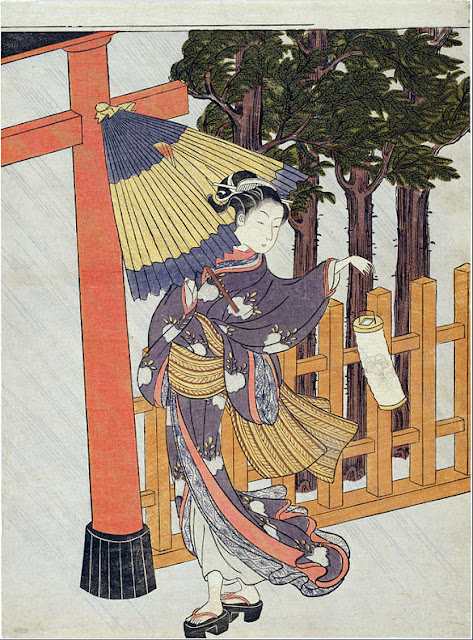 |
Harunobu: Woman
Visiting the Shrine in the Night
|
 |
| Sadanobu II: Portrait of Saigō Takamori |
 |
| Yanagawa Shigenobu: Kachô-e, Title unknown |
 |
| Eisen: A shy girl |
 |
| Hokusai: E-goyomi |
 |
| Kuniyoshi: Mongaku Shônin |
 |
| Hokkei: The Sumida River in Musashi Province |
 |
| Hirokage: Head of a Tiger Eating a Rooster |
 |
| Sadanobu: Kitano Tenmangû keidai |
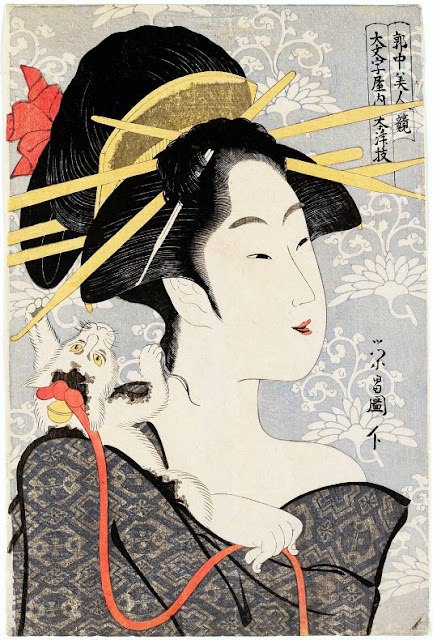 |
| Eishô: Motozue of the Daimonjiya |
 |
| Chōshun: Beauty in the Snow |
 |
| Toshinobu II: Nitta no Shiro Tadatsune faces the Goddess of Mount Fuji and her dragon |
 |
| Kyōsai: Title Unknown |
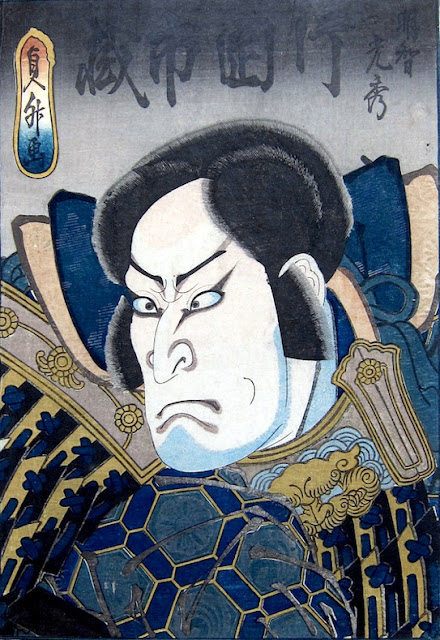 . . |
| Sadamasu: Kataoka Ichizo as Mitsuhide Akechi |
 |
| Shungyō: Hōsō taiji no zu |
 |
| Kunihiro: Nakamura Shikan II as Nuregami Chôgorô and Nakamura Matsue III as keisei Miyako |
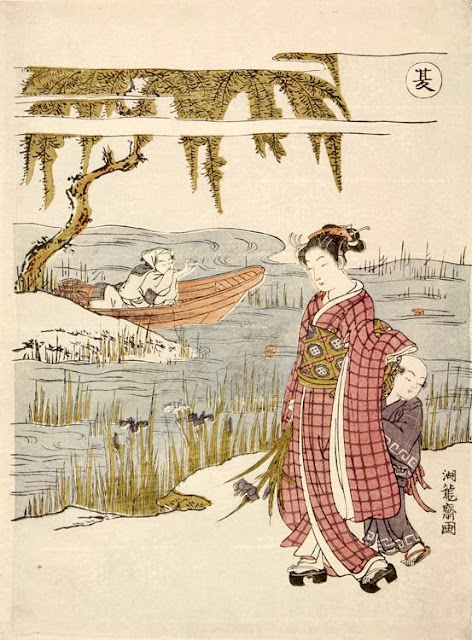 | |||
| Koryusai: Fisherman Waving to Girl on Shore |
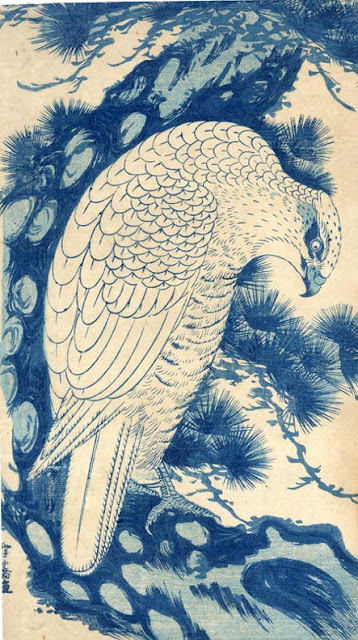 |
| Sekkyô: White Falcon in a Pine Tree |
 |
| Chikanobu: The Battle of Awazugahara: The warrior woman Tomoe Gozen and Hatakeyama Shigetada |
 |
| Gekkō: Carp in the Tone River |
 |
| Yoshitsuya: Shuten Dōji's Head Attacking Raiko's Band of Warriors |
 |
| Utamaro II: Benzaiten Playing Lute |
 |
| Toyoharu: Act VII (Shichidanme) |
 |
| Kiyonaga: Actor Onoe Matsusuke Playing the Shamisen, with a Courtesan and a Kamuro 1782 |
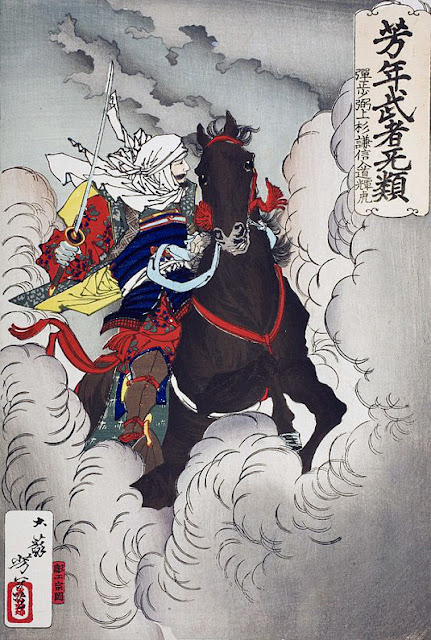 |
| Yoshitoshi: Uesugi Kenshin Nyudo Terutora Riding into Battle |
 |
| Nobukazu: Beauties Viewing Moon, about 1890 |
 |
| The Kanbun Master: Shunga from Yoshiwara Pillow Pictures |
 |
| Ginkô: Tennō Yūryaku overpowers a large wild boar at Mount Katuragi, 1896 |
 |
| Eizan: Hanaôgi of the Ôgiya, 1806-1808 |
 |
| Hokusai: The Strong Oi Pouring Sake |
 | |
| Kunisada: Yakusha-e from 1852 |
 |
| Hiroshige II: Kinryuzan Temple in Asakusa |
 |
| Harunobu: Bijinga |
 |
| Hokkei: Urashima Tarō Going Home on the Back of a Tai Fish |
 |
| Hokusai: Kanagawa oki nami ura |
 |
| Hirosada: Nakayama Nanshi II as Umegae and Jitsukawa Enzaburô I as Kajiwara Genta |
 |
| Eizan: Geisha Playing the Hand-Game Kitsune-ken |